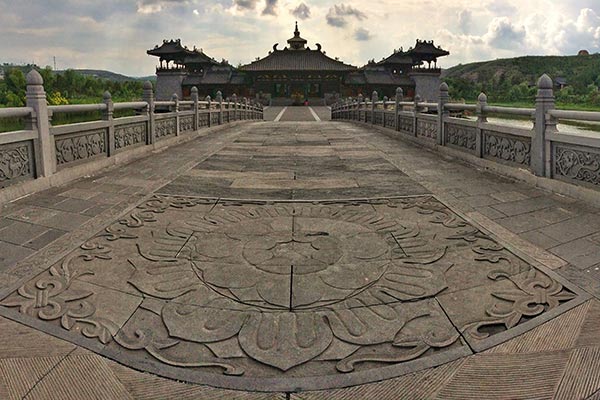Gods and goddesses share sacred mountain
 |
|
Huayan Temple at Datong city in Shanxi. [Photo by Isidoro Ramirez/ For chinadaily.com.cn] |
Most of the main temples are concentrated in an area called the Taihuai cluster, also called Taihuai town or simply known as Wutai Mountain. The Great White Stupa for a long time was part of the biggest temple complex in Wutai Mountain, called the Xiangtong Temple, which today is a separate temple. Before we pay obeisance at these two temples, we kick-start our tour with the Lama temple called Pusading, which is located at the very top of the mountain.
Over the past 2,000 years, Wutai Mountain has come to be respected not just among Chinese monks, but also across Asia, with Indian monks earlier on and later, Tibetan and Mongolian monks also making pilgrimages to the site. Wutai Mountain is a perfect example of harmony between Han and Tibetan Buddhism. The site has also had lamaseries and nunneries, some of which remain today, where only the best get the opportunity to study, coming from all over China. It has functioned as the nucleus of Han Buddhism and is in some ways the most sacred of the four Buddhist holy mountains.
The temples on Wutai Mountain, such as Pusading, were frequently visited by emperors of the Qing Dynasty (1644-1911) to pray, especially as this temple combines Tibetan and Mongolian influences, aptly manifested in the architectural style of the 56-meter-high stupa and the prayer wheels inside the temple, which are not common in Chinese Buddhist temples. More than nine Chinese emperors made about 18 pilgrimages to Wutai Mountain, according to the stone edicts. There was obviously a political angle as well, since praying in a temple also respected by the minority community within China and in China’s near neighbourhoods of Mongolia and Tibet, helped to ensure there would be no wars.
Our tour group faced a slight onslaught as we navigated our way through the temples of Pusading, Xiangtong and Da-bai-ta. A heavy drizzle had begun, which soaked us in rain, but we were also soaked in the mystique and magic of Wutai Mountain, where they say even without rain, rainbows appear to make heavenly images of Wenshu. Our guide advised us to look out for a photograph of Wenshu as we climbed to the top-most prayer hall of Xiangtong Temple, located above the golden spires and a golden hall housing statues of the goddess. According to legend, an image of Wenshu appeared above Wutai Mountain a few decades back, as if smiling from heaven above. When entered the highest prayer hall in the complex, I saw a monochrome picture framed and hung on the right side of the temple, and wondered if it was the goddess's incarnation or an imagined form beautifully rendered. Either way, I returned feeling wiser and calm, promising myself that I shall never give up being a student and striving to learn.
Related:
















